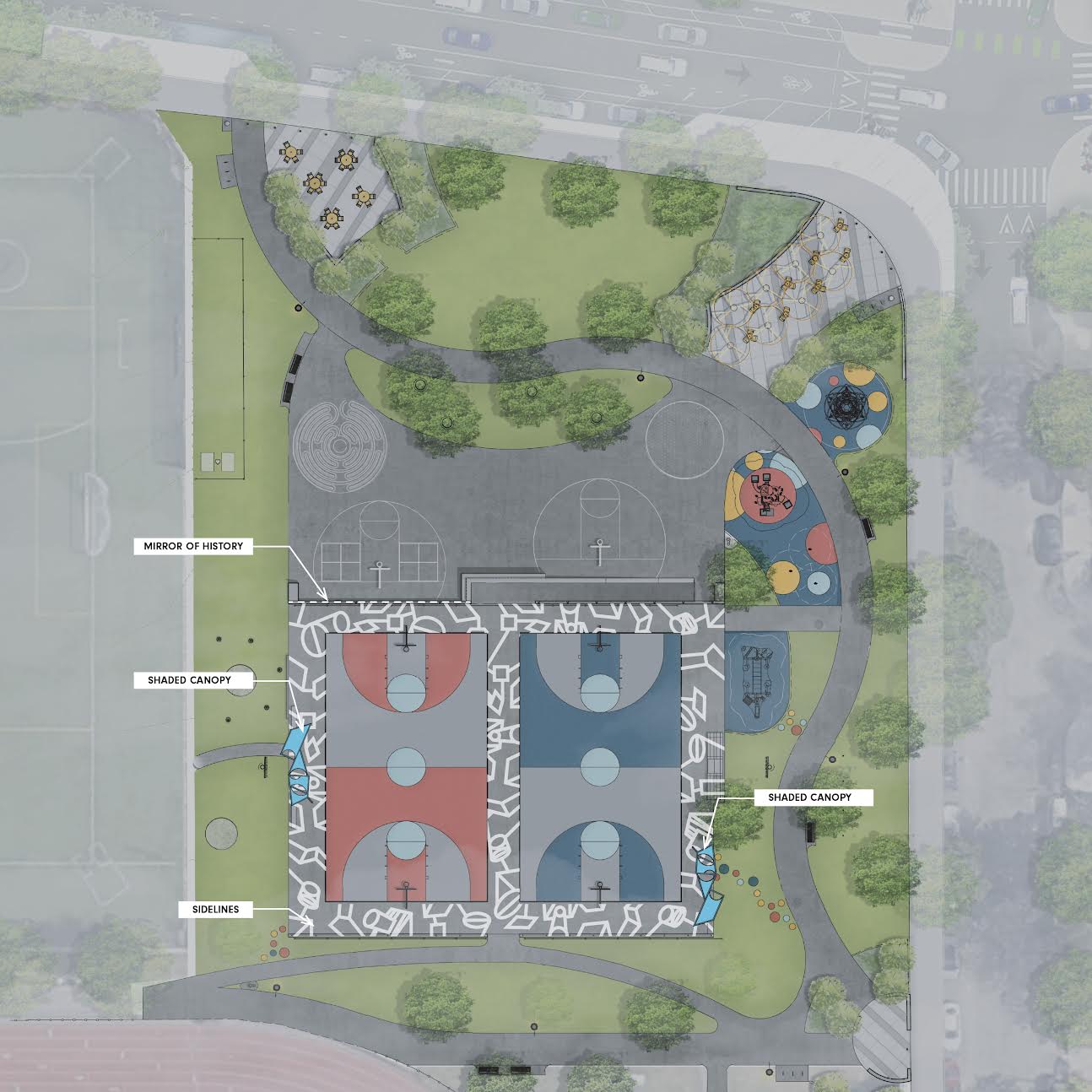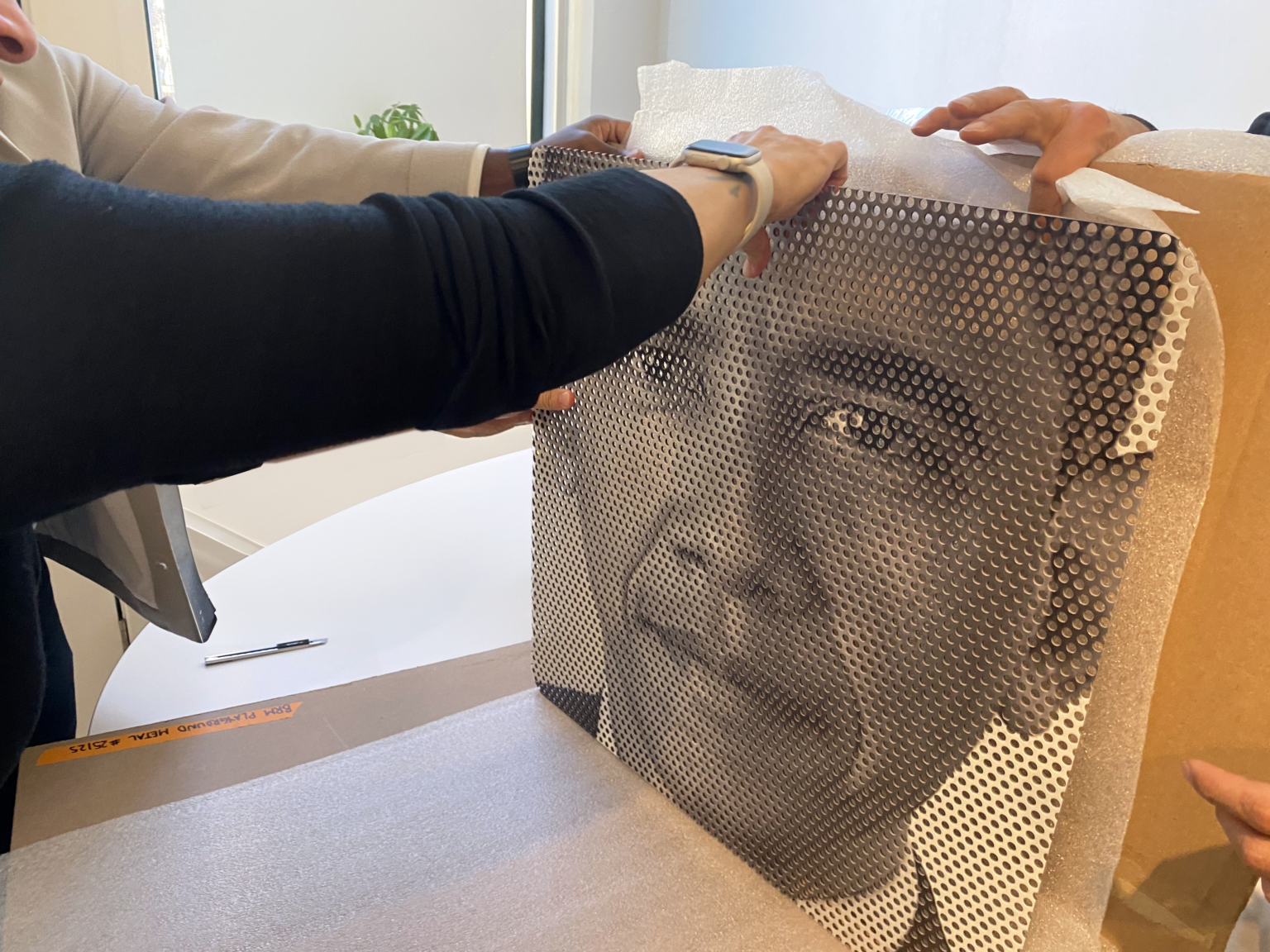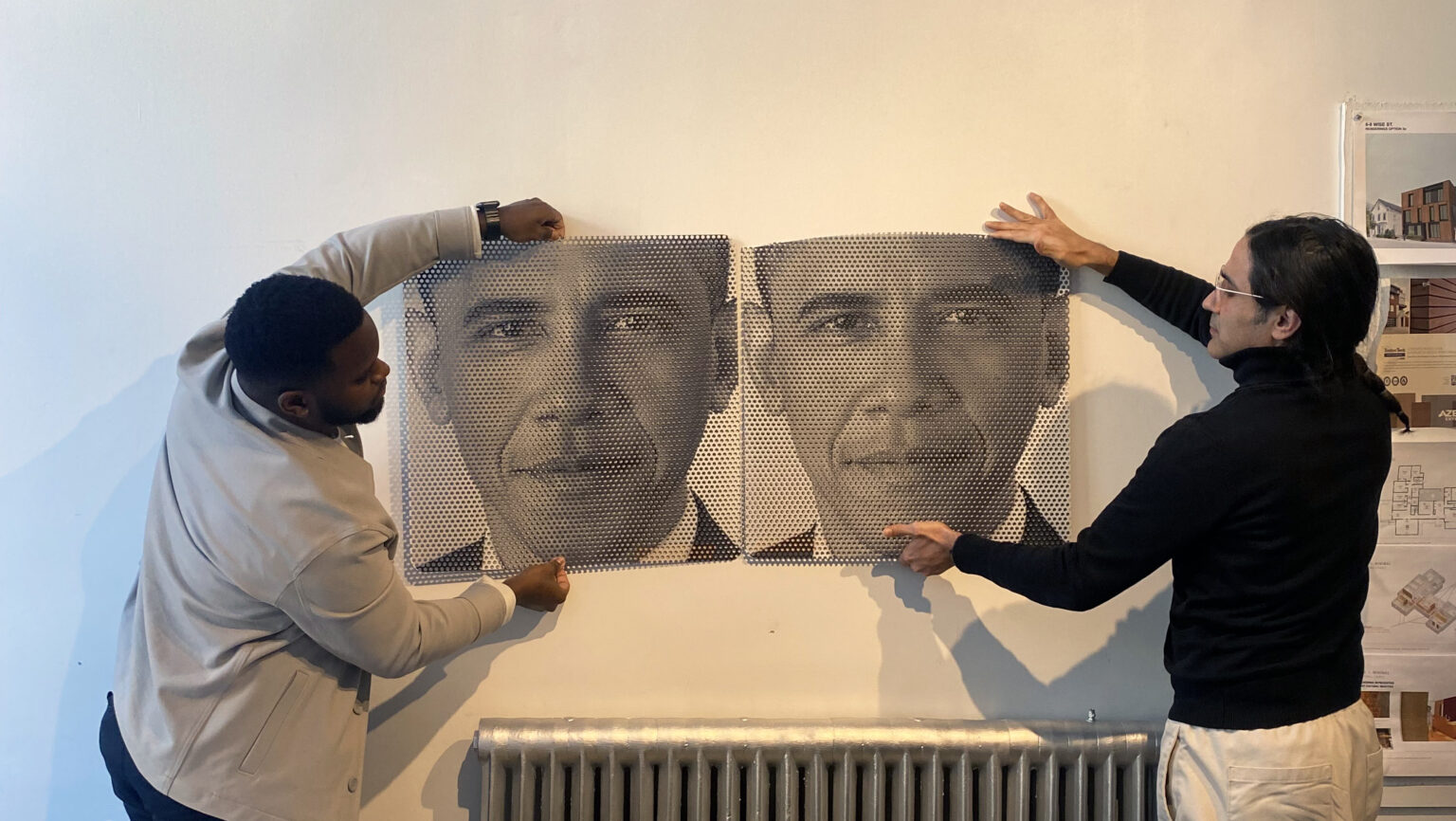The Dewitt playground in Roxbury is a vital public space, providing an important recreational outlet for the surrounding community. To strengthen the space, Studio Luz has been working on an artistic enhancement, one that considers the spaces of interaction between spectators, athletes, and the community as places for engagement with art and history. The city of Boston, via the Boston Arts Commission, invited artists and designers to apply to create permanent public artworks to complement a renovation of the site, and Studio Luz was proud to be selected alongside visual artist Marlon Forrester to collaborate on this important project.

A key part of this project is the Mirror of History fence — a piece of art that also serves as a division between the site’s basketball courts. “The Mirror of History mural fence was conceived as the culmination of the artwork of the painted sidelines — a nod to one of Marlon’s popular pieces, Center Court: Exploring Sacred Geometry through Line, that implied motion which gravitates around the concept of play,” says Studio Luz Designer Joshua Ssebuwufu, who has worked on the project.

The fence re-uses the existing foundations, which minimizes new concrete work and preserves the embedded energy. It also features a series of historical figures, selected through a community engagement where community members and residents in the lower Roxbury area, who both symbolize Black excellence and represent the history, present, and future of the community. “The combination of perforated panel displays and reflective panels allows park visitors to learn about and envision themselves as a part of the rich legacy of these leaders,” says Joshua.
Barack Obama
Having been the first Black President of the United States, President Obama represents the culmination of civil rights struggles and inspires generations in communities like Roxbury.

Chuck Turner
A former Boston City Councilor and grassroots activist, Turner was a fierce advocate for racial and economic justice in Roxbury, championing affordable housing, community control, and equity in public policy.
Elma Lewis
As the founder of the Elma Lewis School of Fine Arts and co-founder of the National Center of Afro-American Artists in Roxbury, Lewis nurtured Black cultural identity and artistic expression in Boston’s youth.
Harriet Tubman
Though not from Boston, Tubman’s legacy of liberation resonates deeply in Roxbury’s historically Black community, symbolizing resilience and the enduring fight for freedom.
Justice Sonia Sotomayor
As the first Latina Supreme Court Justice, Justice Sotomayor represents justice, diversity, and inclusion: values embraced in Roxbury’s multi-ethnic neighborhood.
Mel King
A legendary community organizer, politician, and educator, King was instrumental in transforming Boston’s urban policies to prioritize community empowerment and racial justice. His legacy is foundational to Roxbury’s development.
Martin Luther King Jr.
Dr. King studied in Boston and advocated for racial and economic justice that echoes in Roxbury’s continued activism. His vision aligns with the area’s ongoing fight for equity and dignity.
Reggie Lewis
A beloved Boston Celtics captain and Northeastern University star, Lewis’ life and tragic passing left an indelible mark on Roxbury. He symbolizes excellence, humility, and community pride.
Melnea Cass
Known as the “First Lady of Roxbury,” Cass dedicated her life to improving services and resources for Boston’s black community, particularly in the areas of education, employment, and social justice.
Founders of the Madison Park Development Corporation
MPDC was born from community action in lower Roxbury to counter disinvestment and displacement. Its founders laid the groundwork for one of the most successful community development models in the nation.

Studio Luz is thrilled to be collaborating with Marlon Forrester on this project — it has been not only a meaningful and mutual learning experience, but a true pleasure. “Marlon’s expansive creativity continually challenged and inspired us, pushing us to find the grand balance between technical precision and artistic vision,” shares Joshua. “One of the most rewarding aspects has been witnessing Marlon’s deep-rooted commitment to the community — that alone enriches the work in meaningful ways, and it has been an honor to support that vision.”
Learn more about the Dewitt Playground project here.